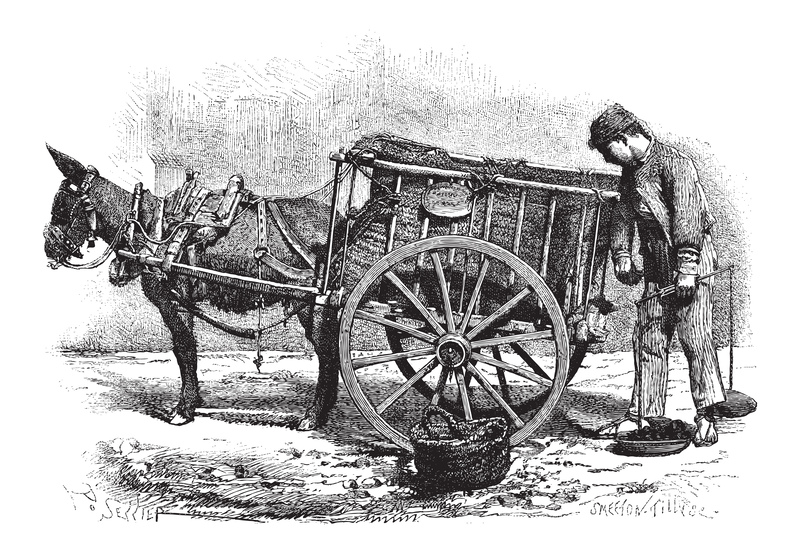Building a Sustainable Future Through Responsible PPE Waste Disposal
The global pandemic has forever changed the way we approach personal health and safety. As personal protective equipment (PPE) became an everyday necessity for millions, so too did the problem of PPE waste management. Today, the world faces an urgent question: How can we build a sustainable future through responsible PPE waste disposal?

Why Is PPE Waste Disposal a Critical Environmental Concern?
PPE, such as masks, gloves, face shields, and gowns, has played a pivotal role in preventing disease transmission. However, the surge in usage has led to an alarming increase in PPE waste worldwide. According to a report by the UN Environment Programme, approximately 75% of used masks and other pandemic-related plastic waste will end up in landfills or the ocean if effective disposal strategies are not adopted.
- Non-biodegradable Materials: Most PPE items are made from synthetic fibers that do not decompose quickly, persisting in the environment for decades.
- Harm to Wildlife: Improperly disposed PPE can entangle and be ingested by animals, causing injury or death.
- Microplastic Pollution: As these items break down, they contribute to widespread microplastic contamination across terrestrial and marine ecosystems.
The Importance of Responsible PPE Waste Disposal
A sustainable future hinges on proper personal protective equipment waste management. Responsible PPE waste disposal is essential for:
- Protecting the Environment: Preventing environmental pollution caused by non-degradable PPE materials.
- Public Health: Reducing the risk of disease transmission from contaminated waste.
- Supporting Circular Economy: Maximizing the potential for recycling or safe energy recovery from used PPE.
Addressing the global PPE waste crisis requires a comprehensive strategy:
PPE Waste in Numbers: The Scope of the Issue
The World Health Organization estimates that around 1.6 million tonnes of PPE waste is generated every single day during the pandemic's peak. With the continued use of PPE in healthcare and other sectors, these numbers remain high. This massive quantity of PPE landfill waste highlights the urgent necessity for structured PPE waste disposal solutions.
Challenges in PPE Waste Disposal Practices
Why is PPE waste so difficult to handle responsibly? Several factors make the management and disposal of PPE waste particularly challenging:
- Contamination Risks: PPE can be contaminated with pathogens, requiring specialized handling and disposal methods to avoid health hazards.
- Lack of Infrastructure: Many regions lack sufficient facilities for separate collection, treatment, and processing of PPE waste.
- Plastic Complexity: The varied plastic polymers used in PPE manufacturing are often incompatible with standard recycling processes.
- Public Awareness: Many individuals are unaware of the correct way to dispose of used PPE, leading to frequent littering and contamination of general waste streams.
Best Practices for Sustainable PPE Waste Disposal
In order to ensure a sustainable future, it is imperative that both individuals and organizations adopt responsible PPE waste strategies. Here are some best practices:
1. Segregate PPE Waste at Source
A first step toward responsible disposal is the separation of PPE from other types of waste. Organizations and households should provide clearly marked bins specifically for PPE waste. Segregation minimizes contamination and enables more efficient downstream processing.
2. Use of Appropriate PPE Disposal Bins
PPE waste bins should be lined with strong, leak-proof bags and covered to prevent accidental exposure. These bins must be easily accessible in areas where PPE use is most frequent, such as healthcare facilities, public transportation hubs, and workplaces.
3. Training and Public Awareness Campaigns
An informed public is crucial for the success of sustainable PPE waste disposal. Campaigns should educate people about:
- The hazards of improper PPE disposal
- Correct disposal and recycling procedures
- The importance of reducing single-use PPE when possible
4. Investing in Safe PPE Waste Collection and Treatment
Local governments and private waste management companies should invest in the collection and treatment infrastructure needed for effective PPE waste disposal, including:
- Dedicated PPE waste collection routes
- Autoclaving or incineration as a safe treatment method for contaminated PPE
- Advanced sorting and recycling facilities for non-contaminated items
Innovation and technology are increasingly important in building the waste management systems of the future.
Eco-Friendly Innovations in PPE Waste Management
As the world strives to find sustainable solutions to the PPE waste dilemma, several innovations are showing promise:
Biodegradable Personal Protective Equipment
One of the most significant advances is the development of biodegradable PPE materials. Items made from natural fibers like cellulose, bamboo, and chitosan offer a greener alternative to conventional plastics. These eco-friendly products break down much faster in the environment, minimizing residual pollution.
PPE Recycling Programs
- Specialized recycling systems can safely process non-contaminated PPE, converting it into new materials used in construction, manufacturing, or energy production.
- Local pilot programs have demonstrated that PPE recycling is feasible with adequate separation and treatment infrastructure.
- Major brands and retailers have begun offering take-back and recycling programs for masks, gloves, and other forms of protective gear.
Energy Recovery from PPE Waste
When recycling is not possible, waste-to-energy technologies provide a responsible alternative. High-temperature incineration of PPE waste generates electricity or heat, safely destroying pathogens and reducing the volume of material sent to landfills. Modern plants are equipped with advanced emission controls to mitigate potential pollution.
Extended Producer Responsibility (EPR)
Governments are increasingly mandating EPR policies, making manufacturers responsible for the end-of-life management of PPE products. This encourages companies to design more sustainable, recyclable, or biodegradable PPE and to establish collection and recycling systems.
Policy and Regulatory Responses
Regulatory frameworks play a vital role in ensuring responsible personal protective equipment waste disposal. Around the world, policymakers are enacting measures to build a sustainable future through coordinated action:
- Mandatory Segregation: Laws requiring the separation of PPE waste at source.
- Investment in Infrastructure: Funding for the development of dedicated PPE waste facilities.
- Strict Enforcement: Penalties for illegal dumping and non-compliance with PPE waste disposal guidelines.
- Transparency: Publicly available data on the quantity and fate of PPE waste.
International Cooperation
PPE waste is a global challenge. Cross-border cooperation is essential for sharing best practices, standardizing procedures, and mitigating the export of hazardous waste to developing countries.
The Role of Healthcare and Industry in PPE Waste Minimization
Healthcare institutions, factories, and other heavy PPE users are uniquely positioned to lead by example in responsible PPE waste management. Ways they can contribute include:
- Prioritizing Reusable PPE: Where safe, opt for sterilizable, reusable gowns, face shields, and masks.
- Bulk Collection and Safe Disposal: Contract with specialized medical waste handlers to ensure safe end-of-life treatment.
- Green Procurement: Choose suppliers committed to sustainable PPE options and transparent waste handling practices.
- Data Tracking: Implement systems to measure and report PPE use and waste generation, driving continuous improvement.

How Individuals Can Contribute to Sustainable PPE Waste Disposal
Building a sustainable future is a collective effort. Individuals can play a vital part in reducing PPE pollution:
- Choose Reusable Options: Use washable masks and face coverings when safe and appropriate.
- Dispose Responsibly: Always place used PPE in designated bins; never litter or flush PPE down toilets.
- Educate Others: Share correct information with friends, family, and colleagues to boost responsible behaviors.
- Support Green Businesses: Buy from companies with eco-friendly PPE practices and sustainability certifications.
Looking Forward: Solutions for a Greener Tomorrow
The crisis of PPE waste is an unprecedented test of our commitment to sustainability. By embracing responsible PPE waste disposal and continually seeking new solutions, we can protect both public health and the planet. Some crucial steps forward include:
- Investment in R&D: Developing PPE that is both safe for users and easy to recycle or compost.
- Global Education: Ensuring individuals worldwide understand the consequences of improper PPE waste disposal.
- Strict Policy Implementation: Enforcing regulations and rewarding compliance at all levels.
- Public-Private Partnerships: Encouraging businesses and governments to collaborate on collection, processing, and innovation.
By making sustainability central to our PPE waste management practices, we can move towards a cleaner, safer, and more resilient future for all.
Conclusion: The Path Towards Sustainable PPE Waste Management
In summary, building a sustainable future through responsible PPE waste disposal requires coordinated action at every level--from individuals and manufacturers to governments and international agencies. The challenges are significant, but so are the opportunities for innovation and positive change. By adopting more sustainable materials, improving educational outreach, investing in better waste management infrastructure, and enforcing robust policies, we can turn the tide on PPE pollution and pave the way for a healthier, greener tomorrow.
Join the movement for responsible PPE waste disposal--protect your health, protect the environment, and help build a sustainable future.